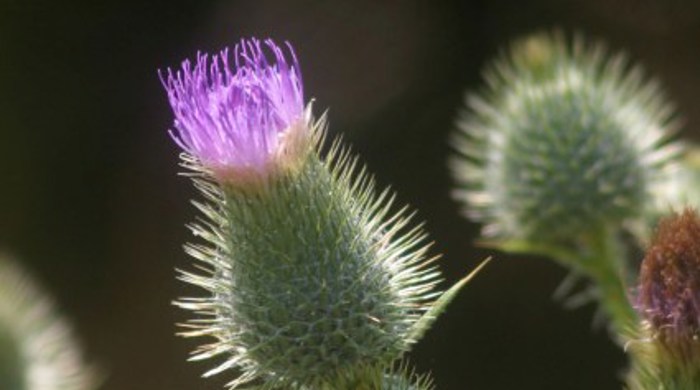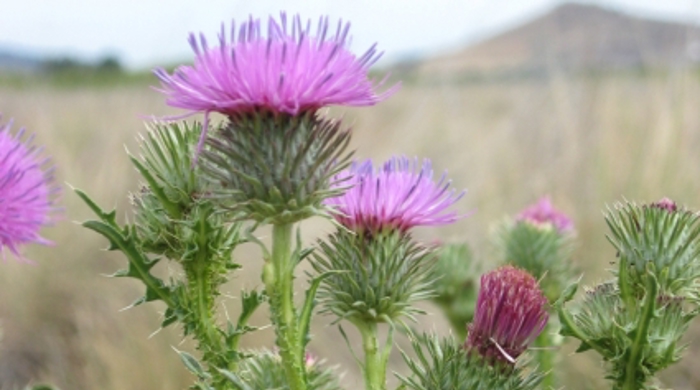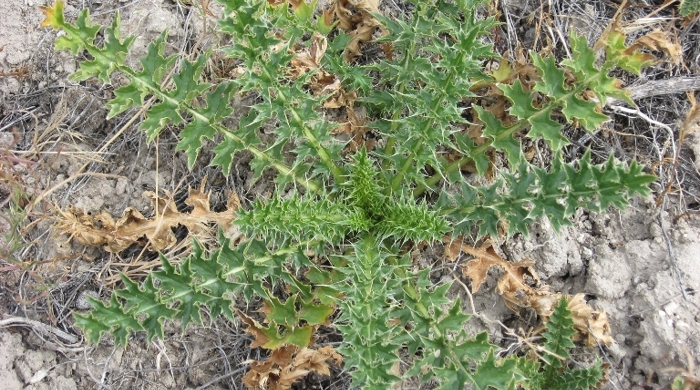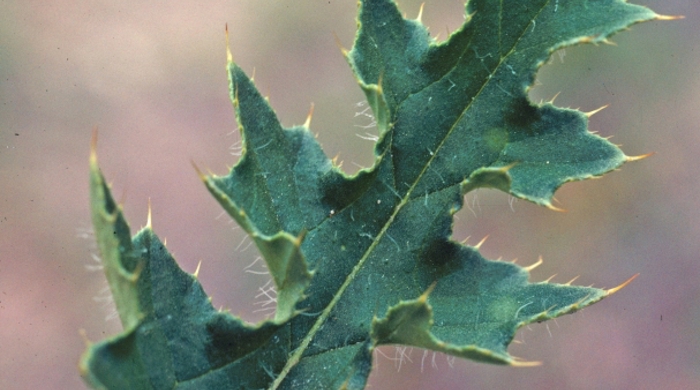Carduus acanthoides
Plumeless thistle
Also known as:
Bastard nodding thistle, tapapa thistle, welted thistle
Family: Asteraceae
Origin: Eurasia

Regional Pest Management Plan (RPMP) status
- Whole region — Sustained control
- Hauraki Gulf Controlled Area Notice pest
General description
Biennial or annual thistle < 2.5 m tall. Stems are erect and winged. Leaves are narrow, deeply divided and form flat rosette. Stems and leaves are spiny and sometimes woolly. Inflorescences are purple and borne at the end of the stems. Achenes bear pappus.
What you need to know
To help protect our environment:
- You must not breed, distribute, release or sell plumeless thistle within the Auckland region.
- You must not plant plumeless thistle within the Auckland region, unless you are transferring an existing plant on your land to another location within the boundaries of the same property.
- You must destroy any plumeless thistle on land that you occupy if it has been planted in breach of the above rules and you are directed to do so by an authorised person.
Habitats
Roadsides, fields, wasteland, disturbed sites, pasture.
Dispersal
Seeds dispersed by wind.
Impact on environment
Aggressively infests pastures, reducing forage quality and accessibility to stock. Spines can cause injuries to humans and livestock.
Control
Site Management
Maintaining good pasture cover can prevent establishment or suppress an infestation. Prevent overgrazing especially in summer. Other herbicides are available for selective use in pasture.
Recommended approaches
Physical control
Method: Dig or grub out at least the first 5cm of taproot.
Plant parts requiring disposal: Seeds.
Disposal options: Remove to greenwaste or landfill if practical.
Biocontrol
Check for presence of agents for nodding thistle which also attack plumeless thistle:
- Nodding thistle receptacle weevil (Rhinocyllus conicus)
- Nodding thistle gall fly (Urophora solstitalis)
- Nodding thistle crown weevil (Trichosirocalus horridus)
For more information about how biocontrol works, see What is biocontrol?
Community agrichemical control recommendations
No qualifications: Foliar spray with 100ml glyphosate green per 10L of water.
Certified Handler/Experienced agrichemical user: Foliar spray with 100ml glyphosate green per 10L of water and 20ml penetrant.
Safety notes
Plant has spines.
Caution: When using any herbicide or pesticide please read the label thoroughly to ensure that all instructions and safety requirements are followed.







